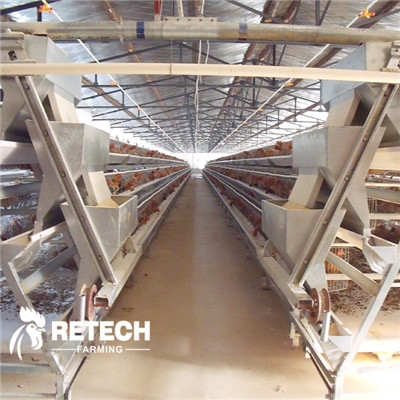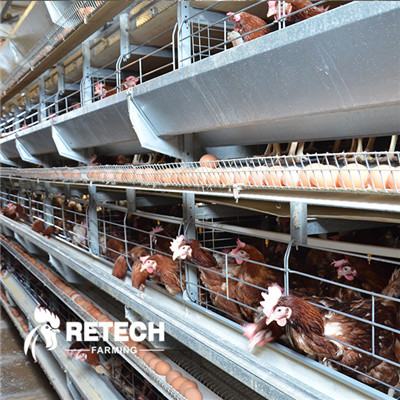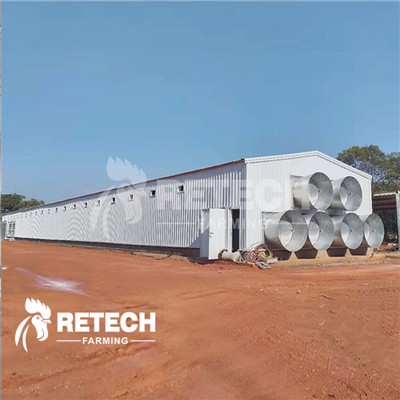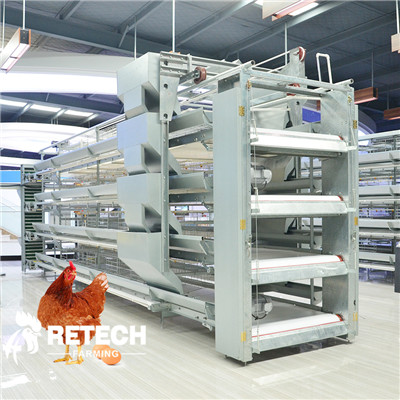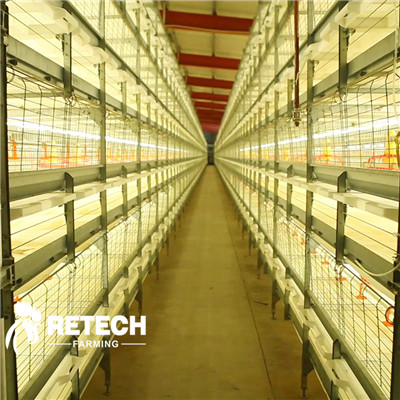Na mbata nke mgbụsị akwụkwọ, ihu igwe na-agbanwe agbanwe, ihu igwe oyi na ịkwaga nnụnụ ndị na-akwagharị akwagharị, ọnụ ọgụgụ dị elu nke ọrịa na-efe efe na ọkụkọ na-achọ ịbanye, ọkụkọ na-enwekwa ike ibute ọrịa nke nrụgide oyi na nnụnụ na-akwaga.
Nnyocha anụ ọkụkọ kwa ụbọchị na-enyere aka ịchọpụta nsogbu ndị dị naanụ ọkụkọgburugburu ebe obibi ma melite njikwa na oge iji nagide mgbụsị akwụkwọ na-agbanwe agbanwe.
Ihu igwe na-eji nwayọọ nwayọọ na-atụgharị oyi n'oge mgbụsị akwụkwọ, ihu igwe na-agbanwe agbanwe, mmiri ozuzo na-ebelata, dị ka àgwà ihu igwe si dị, isi ihe nke nlekọta ahụike ọkụkọ dabeere na amụma "mgbochi dị mkpa karịa ọgwụgwọ", iji meziwanye ọrụ nke mgbochi mgbụsị akwụkwọ, na-echetara ọtụtụ ndị ọrụ ugbo na-aṅa ntị na nkọwa nke ọkụkọ.
Mmetụta nke mgbanwe gburugburu ebe obibi na ọrịa ọkụkọ
1.the okpomọkụ iche na-aghọ ibu, ụtụtụ na mgbede na-ajụ oyi. N'ozuzu, ihu igwe na September jụrụ, nke mere na ọkụkọ otu àgwà nwere ụfọdụ mgbake na ukpụhọde . Otú ọ dị, dị ka okpomọkụ dị iche n'etiti ụtụtụ na mgbede na-aga n'ihu na-abawanye, na ihu igwe na-atụgharị oyi, ọ ga-enye ọnọdụ dị mma maka mgbasa nke ọrịa nje na ọrịa iku ume.
2. ihu igwe kpọrọ nkụ, ndịanụ ọkụkọ uzuzu mụbara, ọkụkọ akụkụ okuku ume mucosa bụ adịkarịghị akọrọ cracking mmebi, ikuku kwụsịtụrụ na pathogenic microorganisms nke uzuzu, mfe site na mmebi nke akụkụ okuku ume mucosa ọrịa, butere akụkụ okuku ume ọrịa, karịsịa ndị ogbenye na gburugburu ebe obibi.anụ ọkụkọ, na-enwekarị Escherichia coli na Mycoplasma anụ ufe na-egbu egbu n'ọrịa agwakọta.
3.Ụnwụnta abalị mụbara. Anwụnta Septemba ka dị, ụfọdụ ọrịa anwụnta na-ebute, dị ka ọkụkọ ọkụkọ na ọrịa okpueze ọcha na-arịwanye elu nke nta nke nta, karịsịa ọrịa anwụnta nke ụdị anụ ọkụkọ anụ ahụ ga-eme na ọnọdụ nchịkwa na-adịghị mma na ọ dịghị ihe mgbochi anwụnta na-efe efe na-efe efe ọkụkọ.
Site n'oge mgbụsị akwụkwọ, ọkụkọ ugbo abanyela ogbo nke nlezianya management, ọtụtụ ndị ọrụ ugbo kwesịrị n'ụzọ zuru ezu tụlee Ọdịdị nke wụsara, esịtidem ngwaike na ọnọdụ ndị ọzọ, na mgbe ahụ na-ekpebi na ọkụkọ njupụta, na oge ọkụkọ, sub-nyefe otu ọchịchị, mkpuchi mkpuchi, ventilashion na kpọmkwem aghụghọ mmejuputa iwu ụzọ na nkọwa ndị ọzọ.
Ekwesịrị ilekwasị anya na mgbochi na ịchịkwa ọrịa ndị a.
1.iji kwalite mgbochi na ịchịkwa ọrịa iku ume, ọtụtụ n'ime ha bụ n'ihi nleghara anya nke okpomọkụ dị iche n'etiti ehihie na abalị, ọ bụghị inye ọrụ kpakpando na ọkụkọ.
2.The ugboro nke oyi nchegbu ọrịa kpatara nnukwu okpomọkụ dị iche n'etiti ehihie na abalị na-amụba, tumadi akụrụ nnyefe na bursal, e ji mmekọrịta chiri anya na mmiri ozuzo na jụrụ n'abalị, mmalite nke ọrịa bụ ihe ngwa ngwa, ma a otutu misdiagnosis na mmeso ọjọọ.
3. N'ihi njupụta nke igwe atụrụ buru ibu, mkpa mkpuchi n'abalị. ụlọ ọkụkọ mechiri emechikpatara site na ventilashị na-adịghị mma na ọtụtụ ugboro E. coli na mycoplasma agwakọta uche.
4. Influenza na E. coli, mycoplasma mbuaha ọrịa malitere ime ọrịa.
5.ọkụkọ ọkụkọ malitekwara ịpụta ihe dị njọ nke ukwuu n'ihi nleghara ịgba ọgwụ mgbochi anya. Iji rụọ ọrụ dị mma nke mgbochi pox ọkụkọ na usoro nchịkwa.
6.mgbochi ọkụkọ "obere okpomọkụ ọrịa". Elu okpomọkụ okpomọkụ, ọkụkọ respiration na-ewusi ahụ mfe n'ihi ọnwụ nke HCO3-, dapụtara na ọkụkọ calcium, site na ndị ọzọ mineral metabolism absorption na-ebelata, na-eme ka ndiiche uto nke ọkpụkpụ anụ ahụ.
Na mgbakwunye, ịkwesịrị ịṅa ntị na ọtụtụ isi ihe:
1. The eke ìhè oge na oge a bụ na a na-emekarị nke nwayọọ nwayọọ shortening, nke na-adịghị eme ka egg mmepụta nke ọkụkọ.
Maka ụlọ ọkụkọnke na-eji nchikota nke ọkụ eke na nke artificial, a ghaghị itinye nlebara anya n'oge a na-agbanye ọkụ na gbanyụọ iji hụ na awa ọkụ kwa ụbọchị kwụsiri ike.
2. Mee ezigbo ọrụ na njikwa nri. Lezienụ anya na ọnọdụ okpomọkụ na iru mmiri n'oge oge mgbanwe iji gbochie nri ka ọ ghara ịghọ onye na-akpụ akpụ ma hụ na ọkụkọ na-eri nri n'ime ebe a na-esi nri dị ọcha otu ugboro n'ụbọchị iji gbochie nri ahụ ka ọ ghara ịdaba na ala nke mmiri mmiri.
N'oge okpomọkụ na oge mgbụsị akwụkwọ na-agbanwe agbanwe, ụlọ ọkụkọ na-enwekarị okpomọkụ na oke iru mmiri, nke nwere ike ịkpata ihe ndị na-akpụ akpụ ngwa ngwa. Ọ bụrụ na agbakwunyere nnukwu nri na ebe a na-esi nri, nri nke fọdụrụ na ala nke ebe a na-esi nri maka ogologo oge nwere ike iduga mmebi nri ebu.
3, ntị ka ojiji nke ọhụrụ ọka, na-emekarị n'oge mgbụsị akwụkwọ wee na ahịa ga-apụta a nnukwu ọnụ ọgụgụ nke ọhụrụ ọka, ọhụrụ ọka mmiri ọdịnaya dị elu ruo n'ókè ụfọdụ diluted oriri na-edozi nke ọka, na ịrị elu nke mmiri ọdịnaya nke crude protein budata belata, ya mere na-n'ụzọ ziri ezi na-agbanwe nri nri n'oge kwesịrị ekwesị.
N'otu oge ahụ, akwa mmiri ọdịnaya nke ọka mkpa ntị ọzọ na nchekwa nke ọka, ezi mgbochi ebu jikoro.
Anyị nọ n'ịntanetị, gịnị ka m ga-enyere gị aka taa?
Please contact us at director@farmingport.com;whatsapp:+ 86-17685886881
Oge nzipu: Ọgọst-26-2022


